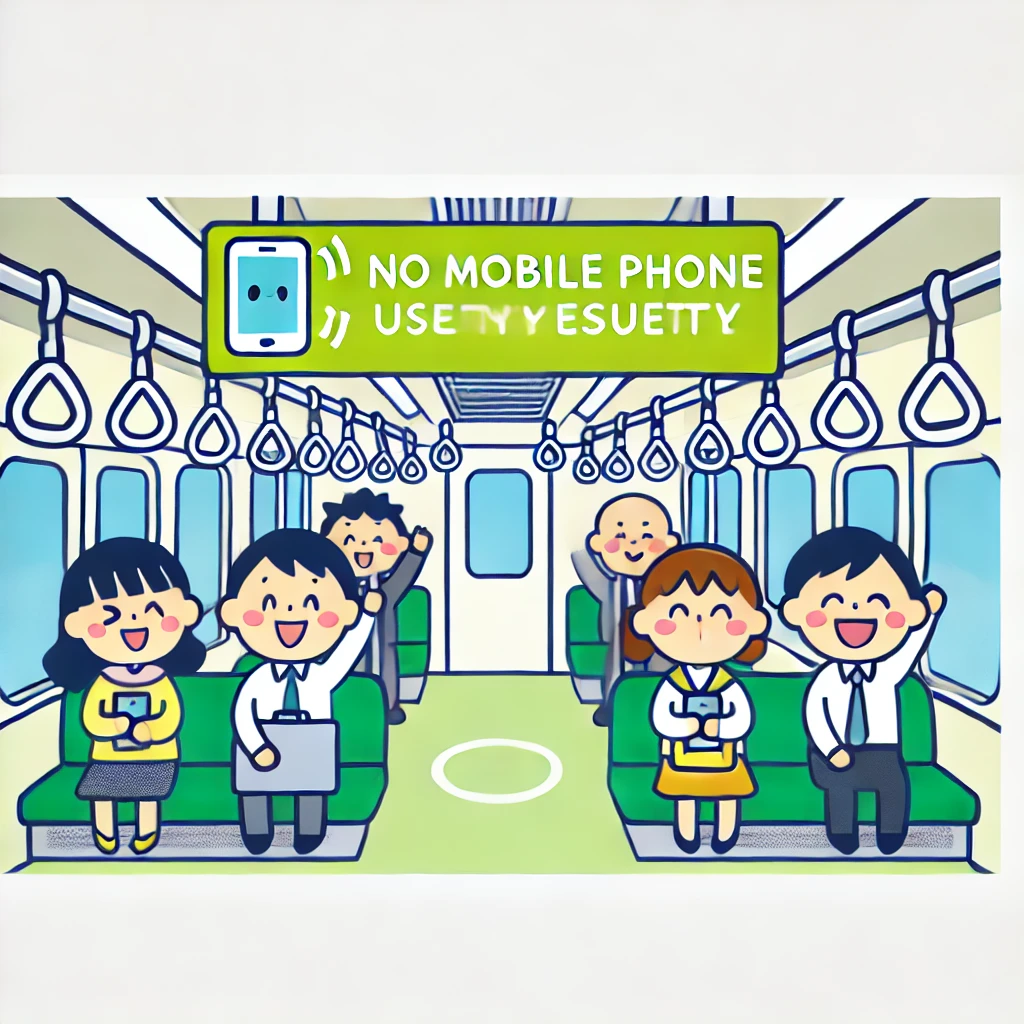If you’ve ever ridden a train in Japan, you’ve probably noticed that almost no one is talking on their phone. This might seem strange to many foreigners. So, why is it prohibited to talk on the phone inside Japanese trains? Let’s break down the reasons in an easy-to-understand way.
Emphasis on Manners and Etiquette
In Japan, manners and etiquette in public spaces are highly valued. Talking on the phone inside the train is considered bothersome to other passengers. The Japanese culture of valuing not causing inconvenience to others leads to people refraining from phone conversations to maintain a quiet environment.
Example: During morning and evening rush hours, many passengers quietly read books or use their smartphones. Talking on the phone would disrupt this tranquility.
Preventing Trouble in Crowded Trains
Japanese trains, especially in urban areas, can get extremely crowded. Talking on the phone can lead to conflicts with other passengers. For instance, speaking loudly can annoy others, and there is a risk of bumping into people unintentionally.
Example: In crowded trains, standing passengers are often in close contact with each other, making phone conversations even more bothersome.
Spread of Mobile Manners
In Japan, the term “mobile manners” is well-known. This refers to the etiquette of using mobile phones and smartphones, including setting phones to silent mode and refraining from calls inside trains. Railway companies promote these manners, with announcements and posters reminding passengers.
Example: On JR East and Tokyo Metro trains, announcements regularly remind passengers to “turn off your phone or set it to silent mode.”
Consideration for Pacemaker Users
Another important reason is consideration for people with pacemakers. In the past, there were concerns that phone signals could interfere with pacemakers, potentially disrupting their normal operation. Therefore, passengers were often asked to turn off their phones near priority seats. Recent studies have shown that the risk of interference is low, but caution is still advised in crowded situations【Reference: SoraNews24, Experience Tokyo】.
Example: According to guidelines from the Ministry of Internal Affairs and Communications, it is recommended to keep mobile phones at least 3 cm away from pacemakers.
History and Background of the Rule
The establishment of this rule was influenced by past troubles and unpleasant experiences. For example, in the 1990s, as mobile phones became more widespread, phone conversations in trains increased. This became a nuisance for other passengers, leading railway companies and public authorities to take action.
Example: In the early 2000s, phone conversations in crowded trains became a significant issue, resulting in numerous complaints. In response, railway companies enforced stricter no-phone policies.
A Humorous Look at the Phone Ban in Trains
The phone ban on Japanese trains might seem strict at first glance, but it’s actually about preserving a “quiet and comfortable space” for passengers. If you ever feel the urge to make a call inside the train, just ask yourself, “Is this a library?” Just like it’s not okay to talk loudly in a library, quietness is expected on trains too.
Example: When riding the train with a friend and the phone rings, you might joke, “Hey, it’s library rules in here!”
Examples and References
Reference Information
- JR East Official Website
- Tokyo Metro Official Website
- Ministry of Internal Affairs and Communications Mobile Manners Guidelines
- SoraNews24
- Experience Tokyo
The reasons for the phone ban on Japanese trains are rooted in cultural background, the importance of manners, and considerations for medical devices like pacemakers. Next time you ride a train in Japan, please follow this rule and enjoy a comfortable journey!


